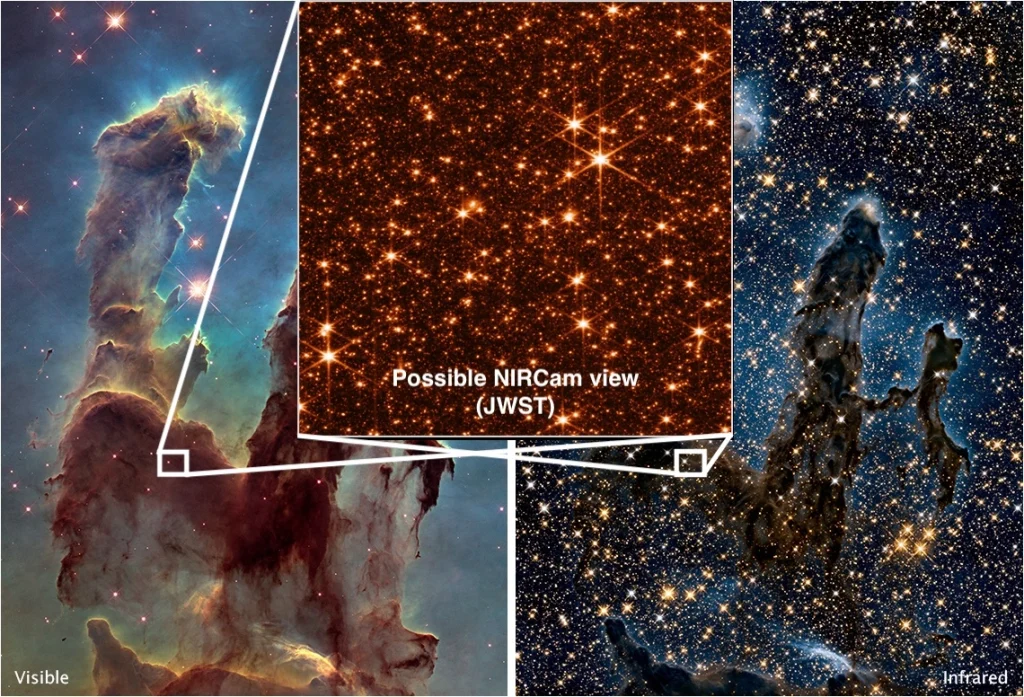The James Webb Space Telescope has recreated one of the most renowned and impressive photographs of contemporary astronomy, exhibiting the enormous spires of interstellar gas and dust known as the Pillars of Creation, with better depth, clarity, and colour.

The Hubble Space Telescope, Webb’s forerunner observatory, first photographed the pillars in 1995, making them famous at the time. Three months later, as Webb started full operations, the first set of cosmic images from Webb were released.
Approximately 6,500 light-years away from Earth, in a region of the Eagle Nebula in the Serpens constellation, young stars are developing in massive, towering columns of thick clouds of gas and dust.
The picture spread like wildfire over the world, appearing on everything from T-shirts to coffee cups.
The pillars were reproduced by Webb in the near-infrared spectrum with even higher translucency, bringing many more stars into view and showing new shapes of the gas and dust clouds. Hubble’s visible-light optics had revisited the picture in 2014 to create a crisper, larger panorama.
According to NASA’s description of the most recent image, the new view “will help researchers overhaul their models of star formation by finding significantly more precise counts of freshly created stars, as well as the quantities of gas and dust in the region.”
According to NASA, the bright red orbs that are emerging near the pillars are young stars that were formed when gigantic knots of gas and dust collapsed under their own gravity and gradually heated up.
The U.S. space agency reported that the wavy red lines at the edges of some pillars that appear to be lava are actually ejections of material from stars that are still developing inside the gas and dust and are only a few hundred thousand years old, according to the assessment.
The $9 billion Webb infrared telescope, which had been in development for over 20 years under a contract with NASA from aerospace behemoth Northrop Grumman Corp., was sent into orbit on December 25, 2021, in cooperation with the European Space Agency and the Canadian Space Agency.
A month later, it arrived at its destination in solar orbit, over 1 million miles from Earth. It is anticipated to change astronomy by enabling researchers to see farther and more precisely into the cosmos, to the beginning of the known universe.

